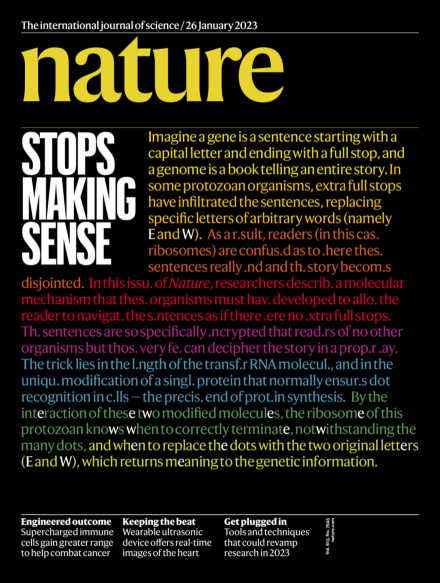Volume 613 Issue 7945, 26 January 2023
This Week
-
Editorial
-
-
World View
-
Research Highlights
News in Focus
-
News
-
Features
Opinion
-
Correspondence
Work
-
Feature
-
How philanthropy can nurture your research
Career Guide:
-
-
Technology Feature
-
Seven technologies to watch in 2023
Collection:
-
-
Where I Work
Research
-
News & Views
-
Perspective
-
Articles

